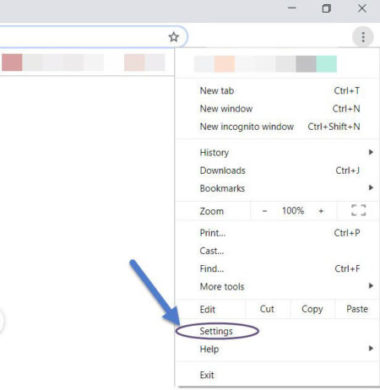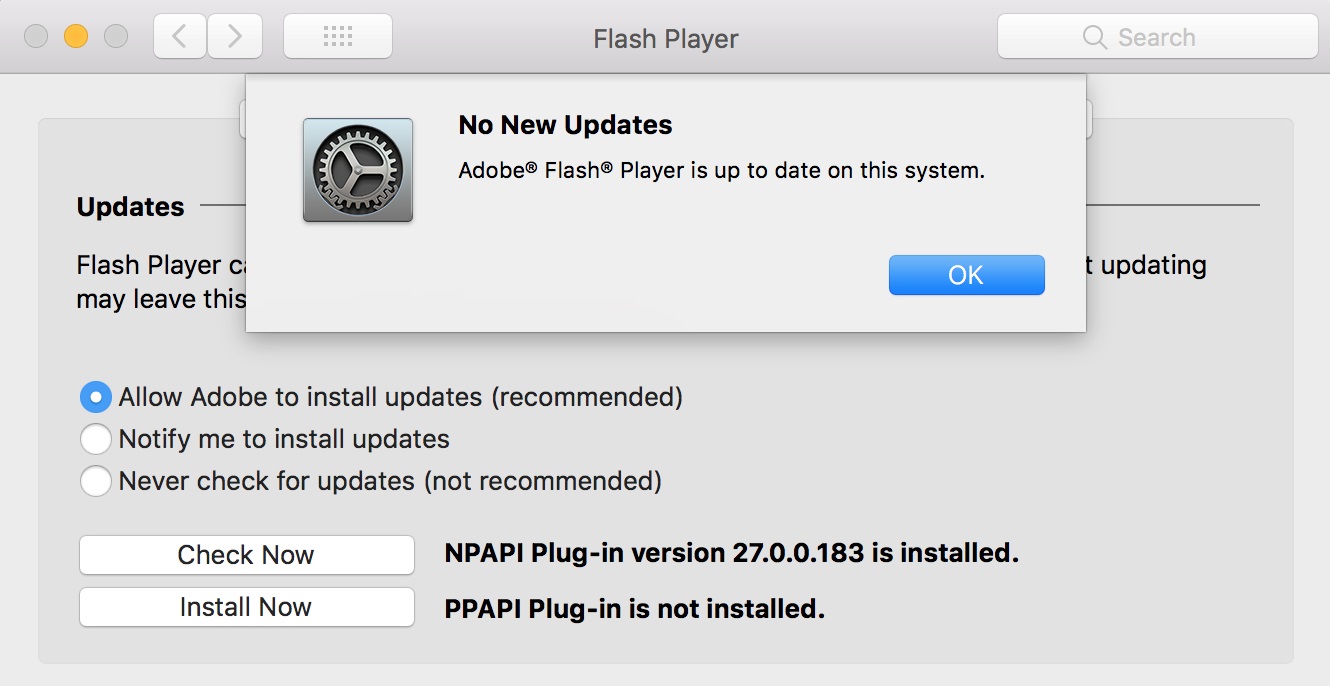Adobe Flash Player is a free software plug-in used by web browsers to view multimedia, execute rich Internet applications, and stream video on your Mac.
Adobe Flash Player is the most popular multimedia player plug-in available. However, recently there have been security concerns which has threatened its popularity as users seek safer alternative solutions. Opera, Firefox and Chrome contain built-in versions of Flash running in sandbox mode. This method is safer than running Flash as a plugin. However, currently the reality is that you still may need the Adobe Flash Player on your Mac because many websites will not work well if you uninstall it. Here I’ll show you how to install Adobe Flash Player and how to set it up correctly.
Apple Safari version 14, released for macOS in September 2020, will no longer load Adobe Flash Player or play Flash content. Please visit Apple’s Safari support for more information. For Mac OS X 10.11, macOS 10.12, and later Open Safari, and choose Safari Preferences. What is Adobe Pepper Flash Player for Mac? An alternative to Adobe Flash Player is the Pepper Flash Player by Google. Pepper Flash Player includes a range of features, helping it get the upper hand over Flash Player. Currently Pepper Flash is compatible with only Chromium and Chrome. It is a separate Debian package.
How to install Adobe Flash Player on your Mac.
1. Go to http://get.adobe.com/flashplayer/ to download the Adobe Flash Player installer.
2. By default, the installer package will be downloaded to your “Downloads” folder.
3. Select the file on your Mac and double click to install it.
4. Select “Allow Adobe to install updates (recommended)” and click “DONE” to complete the installation.
If you installed Adobe Flash Player, but still cannot view online videos on certain websites, you need to check Adobe Flash Player on your browsers.
How to set up Adobe Flash Player on various browsers.
Safari
1. Launch Safari and go to the Apple menu bar and click Preferences.
2. Select the Websites tab and select On for “When visiting other websites.”
3. Refresh the browser tab, or restart the browser.
Google Chrome
1. Launch Chrome and type chrome://settings/content in the address field.
2. Select “Ask first (recommended)” and turn it on.
3. Refresh the browser tab or restart the browser.

Opera
1. Launch Opera and go to the Apple menu bar and click Preferences.
2. Select the Websites tab and then select “Allow sites to run Flash”
3. Refresh the browser tab or restart the browser.
Firefox
1. Launch Firefox and go to the Apple menu bar and click Tools – Add-ons.
2. Click the Plugins tab and turn the “Shockwave Flash” to “Always Activate.”
Note: (SWF (Shock Wave Flash) is a special format created by Macromedia, which has been acquired by Adobe. It is widely used in web design, animation production and other fields.)
Adobe Flash Option For Mac Osx
For enhancing the user experience and security, Adobe is always trying to improve Adobe Flash Player. However, sometimes when you view a website, a Flash Player upgrade popup appears. Most people would click the “update” button to update their Flash Player, but this could be a false popup used by hackers to compromise your Mac. This is a method hackers use to trick you into downloading adware and malware through a false popup.
Be careful and don’t trust any automatic updates of Adobe Flash Player. Here I will tell you how to install real Flash Player updates and set it up.
How to update Flash Player on Mac safely
1. Go to the Apple menu bar and select System Preferences.
2. Select Flash Player.
3. Select the Updates tab and select “Allow Adobe to install updates (recommended)”. (Note: The Flash plug-in is officially updated 1~2 times a month, so selecting this option avoids frequent update.)
4. You may now notice that the Flash Update settings now shows NPAPI and PPAPI plugins. Let me explain them.
NPAPI – used by Safari, Firefox
PPAPI – used by Chromium, Opera and Chrome (Chrome’s implementation is built in)
5. Click Check Now to confirm that you currently have the latest version installed.
If you had clicked a false popup and downloaded adware, don’t worry, the Apple App Store has many antivirus apps, such as Trend Micro’s Antivirus One, that you can use to do a free scan.
Follow the steps below in case you downloaded a fake Adobe Flash Player.
1. When you first install Antivirus One, click “Pattern Update” to make sure your virus pattern is up to date. We suggest you update the virus pattern every day.
2. After the first installation, we highly suggest you perform a full scan of your Mac to check all files for possible infections. The Full scan will take more than one hour.
3. If you still find adware and a full scan has not found any viruses, we recommend you use Adware Cleaner. You can access Adware Cleaner in the left panel of the Antivirus One window.
How to uninstall Adobe Flash Player
Adobe Flash Player for the Mac is a plug-in, not a Mac OS X application. When you try to uninstall Adobe Flash Player from your Mac, you might find that this plug-in is not so easy to delete. For example, you might see this message:
Cannot find Adobe Flash Player in your Applications folder.
In this case, Adobe Flash Player could not be removed and no reason was given. The following steps show how to uninstall Adobe Flash Player with no remaining parts.
1. Go to the /Applications/Utilities/ folder on your Mac and double-click the Adobe Flash Player Install Manager app.
2. Click Uninstall to begin the process.
3. Type the password and click Install Helper.
4. If your browser is running, the following window will appear. Select “Force Close All” to continue.
5. After the uninstaller removes the Adobe Flash software from your Mac, click Done.
Related posts:

Originally published: September 9, 2019
Updated: September 11, 2020
Adobe Flash Option For Mac Os
Please go here to search for your product's lifecycle.
This article has been updated. Please go here for the latest.
Adobe will end support of Flash Player on December 31, 2020. Here's what you can expect in the meantime for each Microsoft browser:
In the next version of Microsoft Edge (built on Chromium), Flash will be disabled by default. However, users may re-enable it on a site-by-site basis. The timeline for Chromium-based browsers can be found here.
Flash will not be disabled by default from Microsoft Edge (built on EdgeHTML) or Internet Explorer 11 prior to its removal by December of 2020.
Flash will be completely removed from all browsers by December 31, 2020, via Windows Update. Group policies are available for enterprise admins and IT pros to change the Flash behavior prior to that date.
Companies reliant on Flash for development and playback of content are encouraged to remove the dependency on Adobe Flash prior to December 2020.
Adobe Flash Option For Mac Catalina
Please see our blog for more information.
Adobe Flash Option For Mac Shortcut
